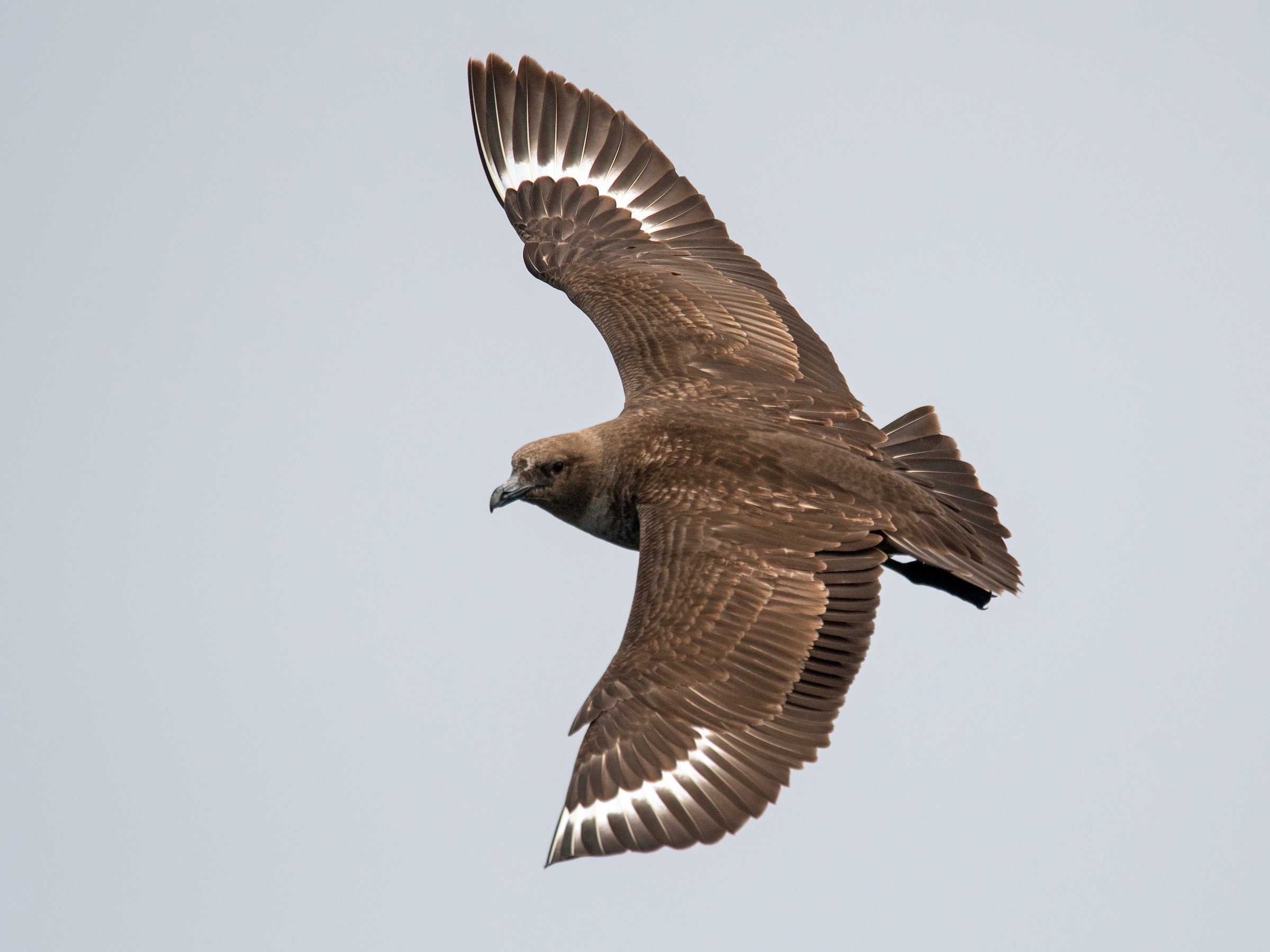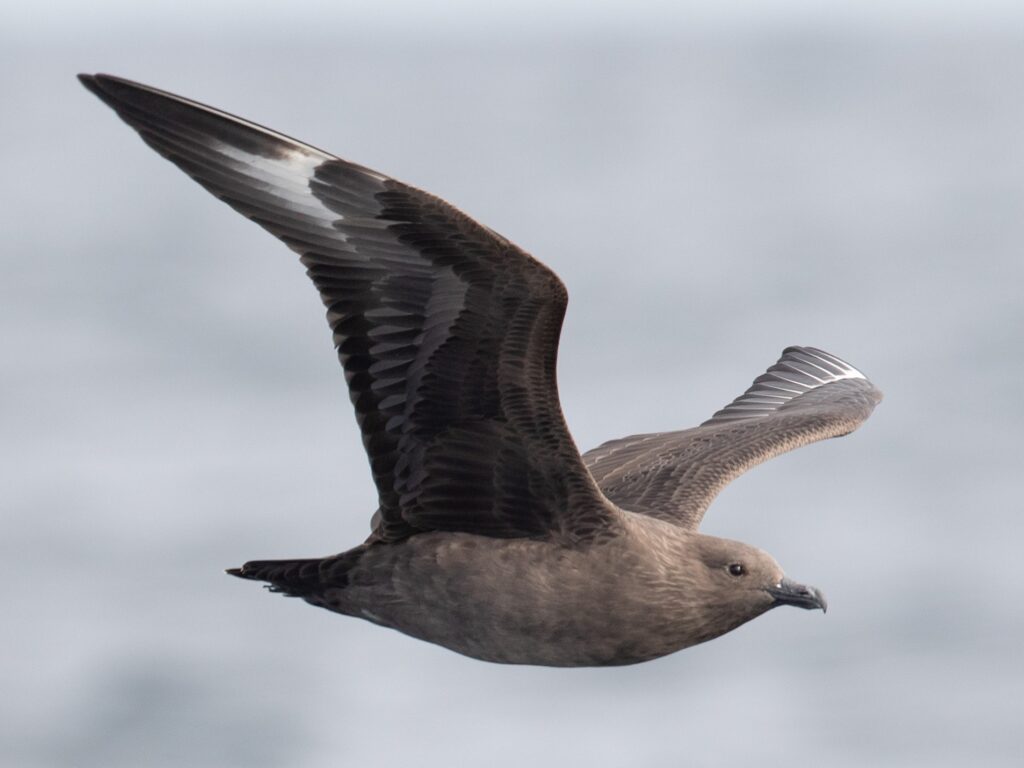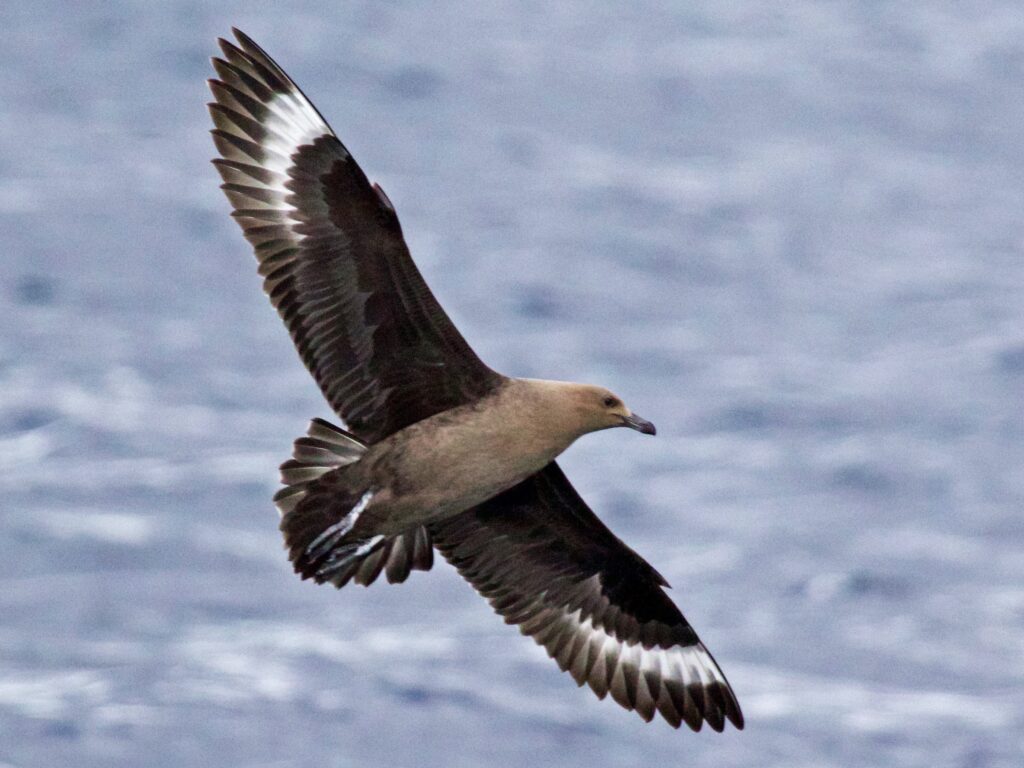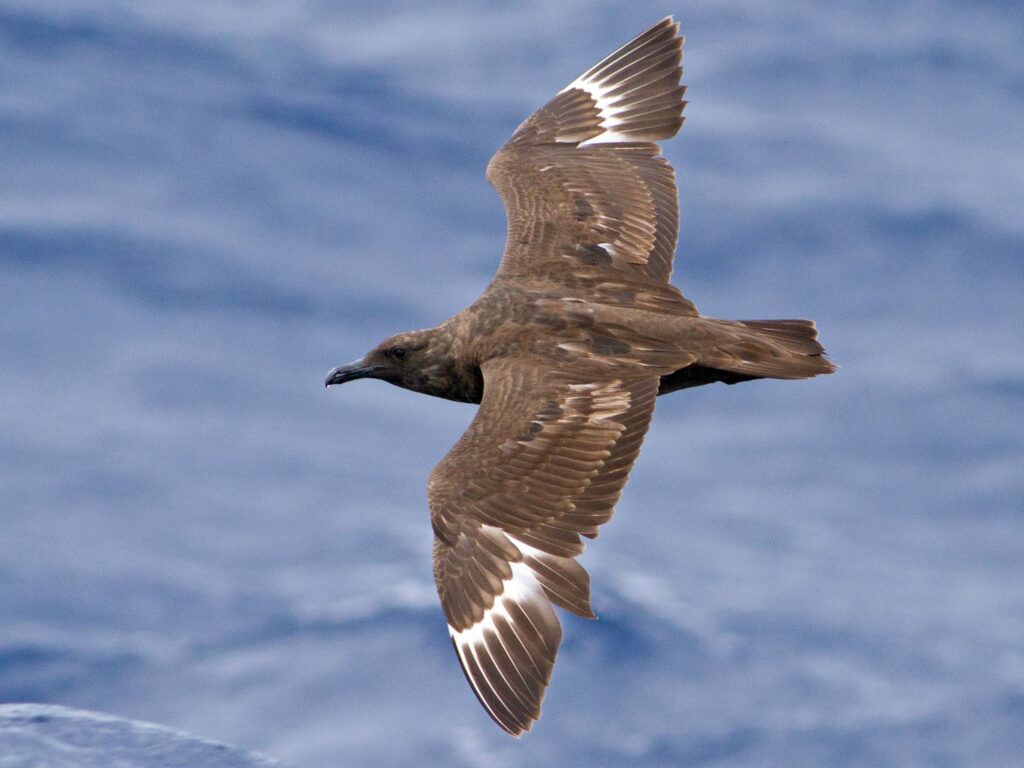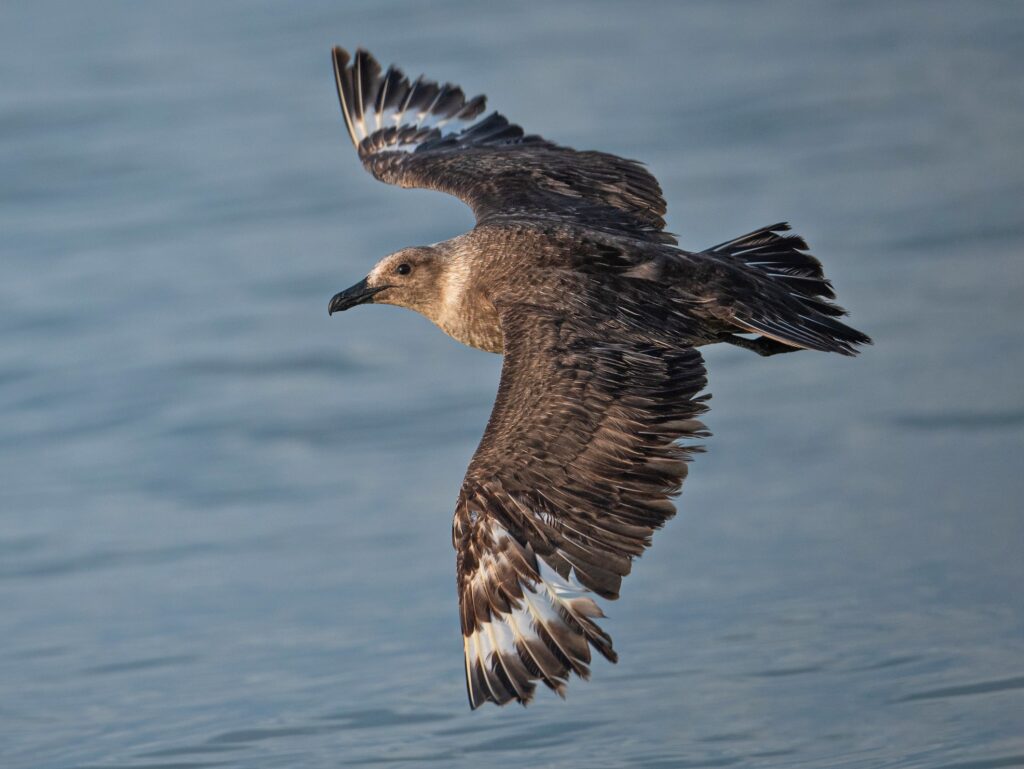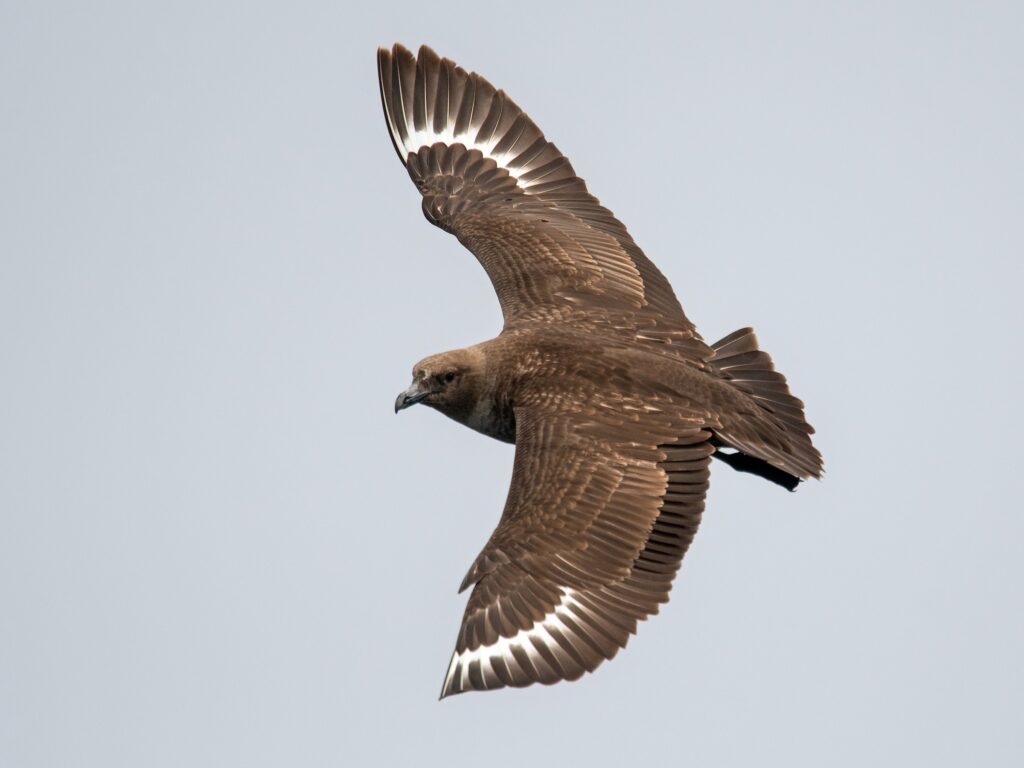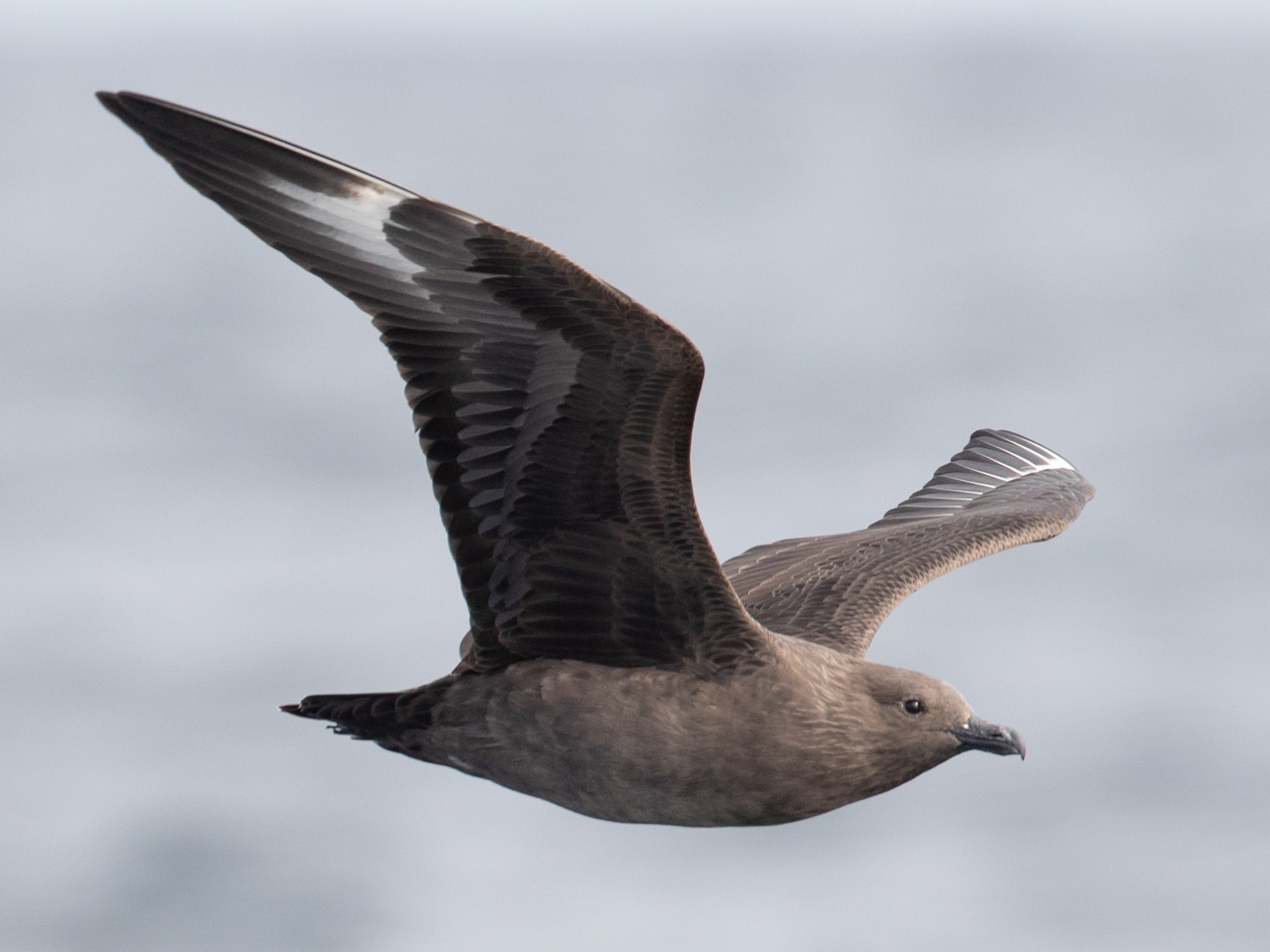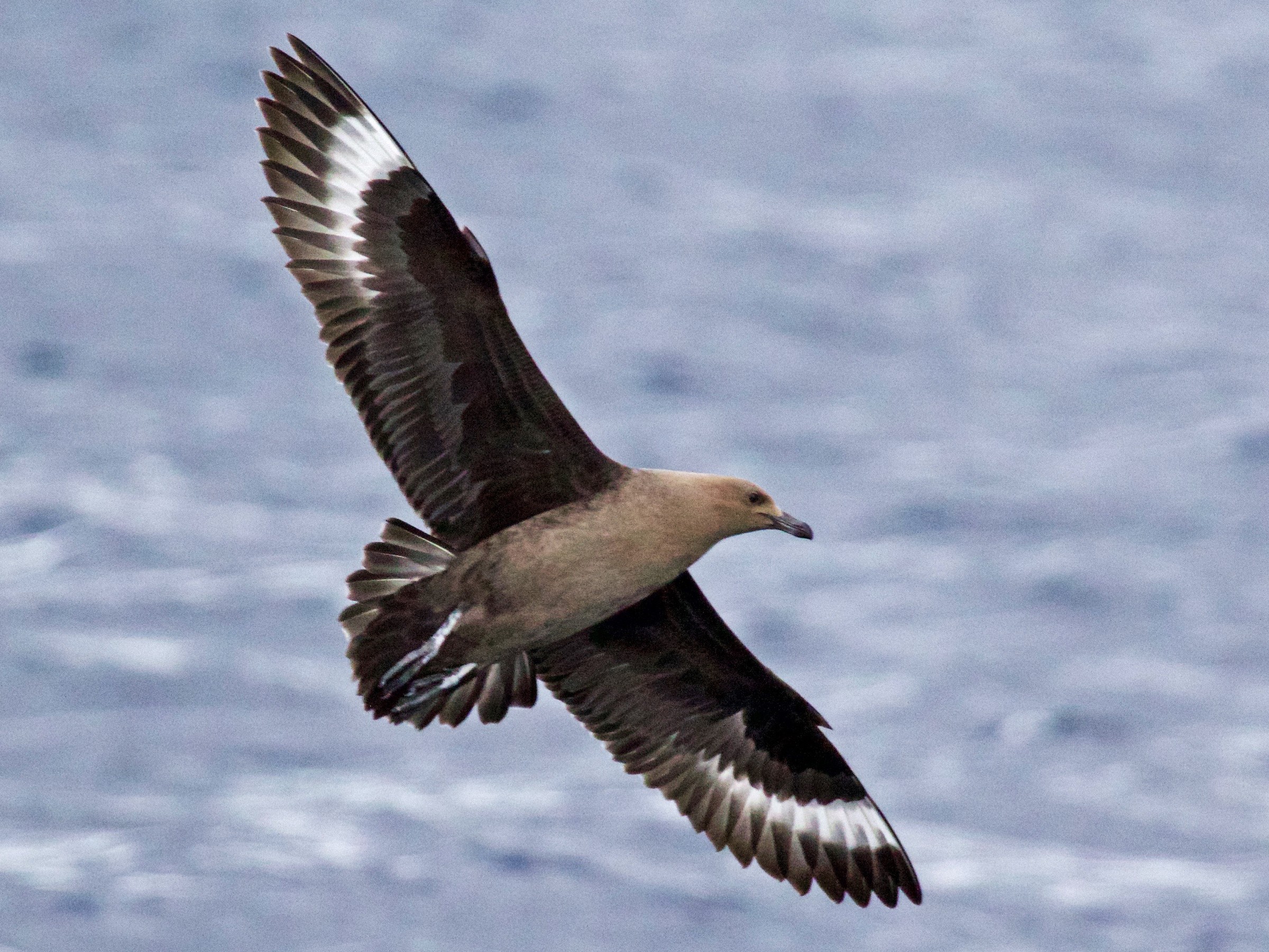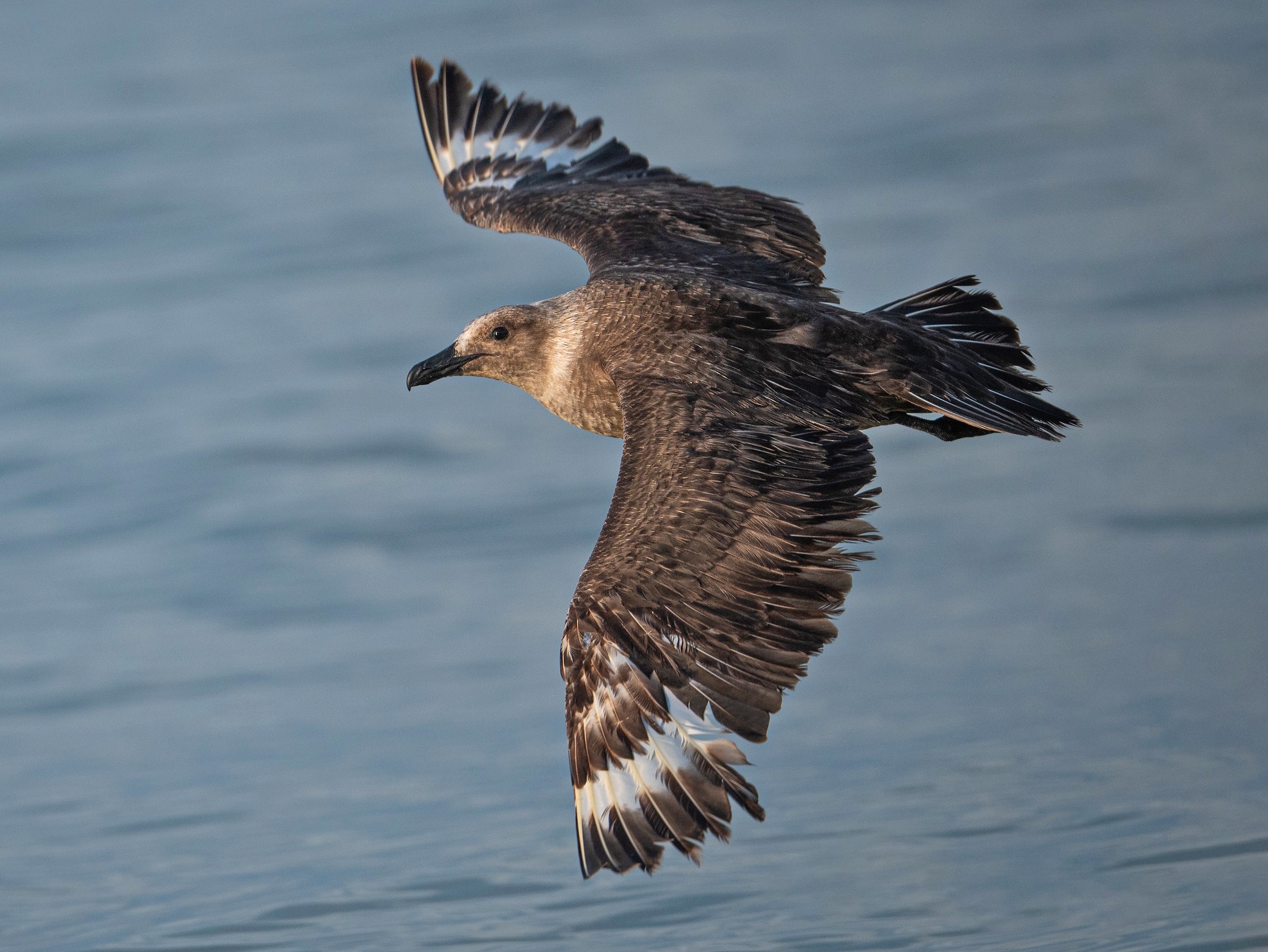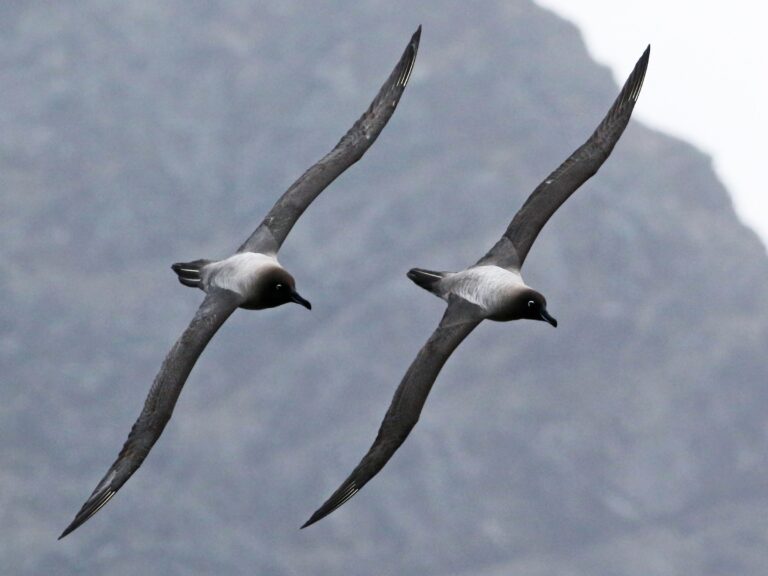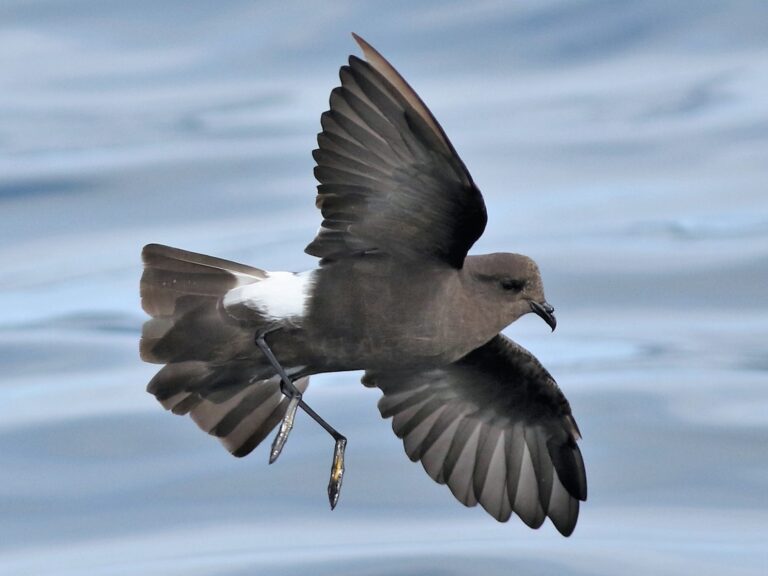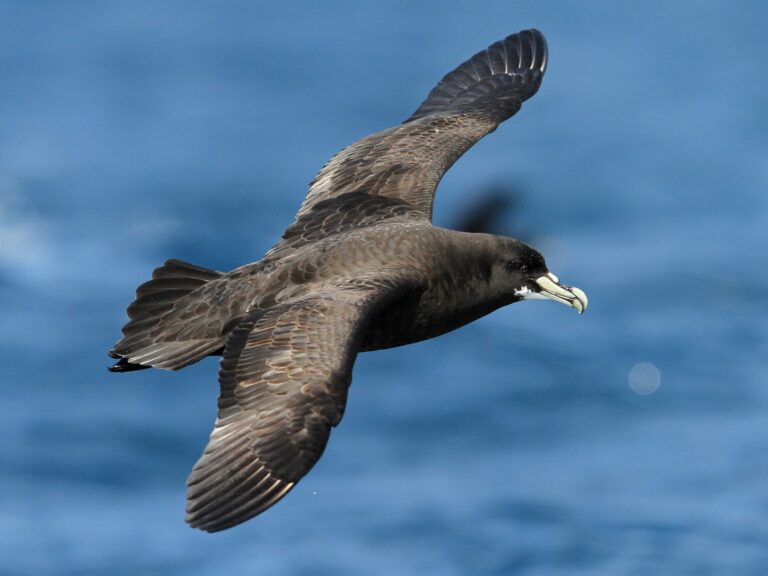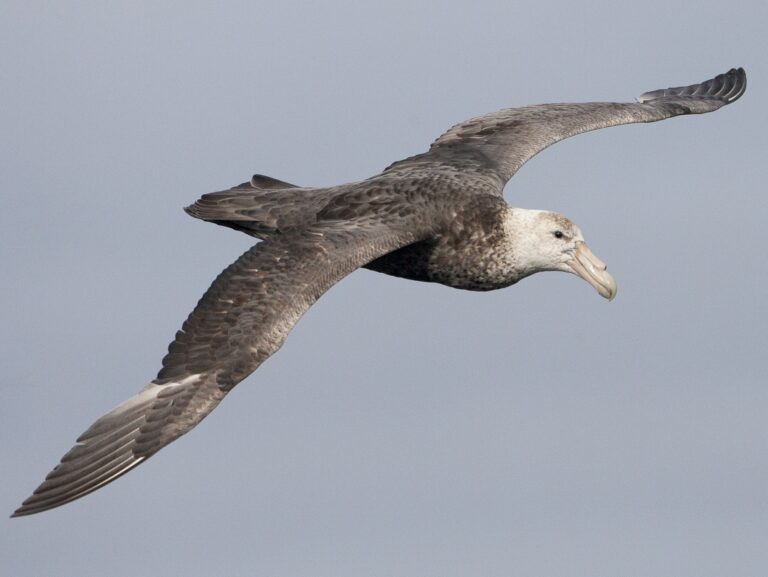South Polar Skua: Masters of the Antarctic Skies
The South Polar Skua, scientifically known as Stercorarius maccormicki, is a remarkable seabird found primarily in the Antarctic region.
This species is known for its aggressive hunting tactics and scavenging behavior, making it a key player in the Antarctic ecosystem.
From their striking appearance to their intriguing life cycle, South Polar Skuas capture the attention of birdwatchers and researchers alike.
These birds spend part of the year in diverse oceanic environments, showcasing impressive migration patterns that highlight their adaptability.
Their diet consists of various marine organisms, which they skillfully hunt or scavenge, showcasing their resourcefulness.
The breeding habits of South Polar Skuas further reveal their complex behavior and strong parental care, contributing to the ongoing study of their conservation status.
Key Takeaways
- The South Polar Skua is an important seabird within the Antarctic ecosystem.
- Their diet consists of marine organisms that they hunt or scavenge.
- Ongoing studies focus on their breeding habits and conservation efforts.
Classification and Description
The South Polar Skua is a fascinating bird known for its unique characteristics and classification. This section discusses its taxonomy and name origin, as well as the physical traits that define this species.
Taxonomy and Name Origin
The South Polar Skua belongs to the family Stercorariidae. This family includes various skuas and jaegers, all of which are large seabirds.
The scientific name for the South Polar Skua is Catharacta maccormicki.
The name “maccormicki” honors the naturalist William MacCormick.
The classification of skuas has evolved over time, leading to debates among experts about their relationships with other birds. Scientists recognize four species within the genus Catharacta.
Physical Characteristics
The South Polar Skua exhibits considerable plumage variation. They are commonly classified into two primary morphs: the pale morph and the dark morph.
- Pale Morph: This variant features a light brown body, with paler underparts.
- Dark Morph: This morph is mostly dark brown, providing excellent camouflage against the ocean environment.
Adult South Polar Skuas can have a wingspan ranging from 150 to 170 centimeters.
Juveniles typically have a more mottled and brown appearance, which changes as they mature.
These physical traits help them adapt to their cold, harsh habitats in the Antarctic region.
Habitat and Distribution
The South Polar Skua is primarily found in the Antarctic region, showing specific preferences for breeding and non-breeding habitats. Understanding these patterns helps to appreciate their ecological role and adaptability.
Breeding Territories
During the breeding season, South Polar Skuas establish territories primarily on the Antarctic Continent and surrounding islands. They favor locations near penguin colonies, where food is readily available.
Preferred sites include rocky cliffs and coastal areas. These skuas build their nests directly on the ground, often using vegetation for cover.
Nesting sites are chosen for safety and accessibility to food sources, which typically consist of fish, carrion, and penguin chicks.
Breeding pairs are known to be highly territorial, defending their space against intruders.
This behavior ensures the protection of both their young and food resources, making the selection of a nesting site crucial for their breeding success.
Non-Breeding Range
Outside of the breeding season, South Polar Skuas migrate to a pelagic lifestyle in the southern oceans. Their non-breeding range extends across the Pacific Ocean and adjacent waters, taking them far from land.
During this time, they are often seen foraging over vast ocean areas.
They feed on fish and various marine organisms, adapting to seasonal changes in food availability.
Interestingly, their non-breeding distribution also overlaps with areas inhabited by other seabird species.
This creates competition for resources, influencing their behavior and feeding strategies during migration.
The ability to thrive in diverse marine environments showcases their adaptability and survival skills.
Diet and Feeding
The South Polar Skua has a diverse diet that reflects its opportunistic feeding behavior. This bird utilizes different strategies to obtain food, preying on a variety of species, including fish, penguins, and their eggs.
Feeding Strategies
South Polar Skuas are known for their adaptability in feeding methods. They primarily rely on two main strategies: foraging and kleptoparasitism.
- Foraging: Skuas hunt for fish and small marine animals directly. They can dive and snatch prey from the water’s surface.
- Kleptoparasitism: They often steal food from other birds, especially during the breeding season. For instance, they may chase away adult penguins or gannets to take their chicks or eggs.
These strategies allow South Polar Skuas to thrive in the harsh Antarctic environment where food can be scarce.
Preferred Prey
The diet of the South Polar Skua includes a variety of items, making them flexible hunters. Some of their preferred prey includes:
- Fish: This bird consumes various fish species, which form a substantial part of its diet.
- Penguin Eggs and Chicks: Skuas often target penguin colonies, feeding on their eggs and young chicks.
- Gannets: They also prey on juvenile gannets when the opportunity arises.
This wide-ranging diet is crucial for the skua’s survival, especially during the breeding season when energy needs increase. The ability to exploit multiple food sources is key to their ecology in the Antarctic.
Reproduction and Life Cycle
The South Polar Skua has distinct breeding habits and a unique process for raising chicks. This bird is known for its strong pair bonds and specific nesting behaviors.
Breeding Habits
South Polar Skuas typically form monogamous breeding pairs. These pairs often return to the same nesting sites each year, demonstrating site-tenacity.
Breeding usually takes place from late September to early November.
The female lays 1 to 3 eggs, which are generally olive or brown in color, providing camouflage against the rocky ground.
Both parents share responsibilities for incubation, lasting about 30 to 34 days.
Once the eggs hatch, both adults actively guard the nest and defend it against potential threats. This cooperation ensures a higher chance of survival for their offspring.
Raising Chicks
After hatching, the chicks are born covered in down and are semi-precocial, meaning they can walk and feed themselves shortly after. The parents provide protection and keep the chicks safe from predators.
It typically takes about 50 to 60 days for the chicks to fledge. During this time, they learn to fly and hunt.
Feeding remains a key aspect of early life, and parents often bring food to the chicks.
Once fully fledged, the young skuas will leave the nesting area and begin their own life journeys.
Interactions and Coexistence
South Polar Skuas interact with both humans and other bird species in their environment. These interactions greatly influence their feeding habits and behavior. The relationships with natural predators also play a significant role in their survival.
With Humans and Introduced Birds
South Polar Skuas often face challenges from human activities. Human presence can disrupt their breeding grounds, especially on islands where tourism is common.
They may become opportunistic feeders near garbage or fishing activities.
Introduced birds, like rats or starlings, can compete for food and nesting sites. These species may consume eggs or disturb nests, affecting the skuas’ reproductive success. South Polar Skuas show adaptability by feeding on these introduced species when necessary.
Natural Predators
In their natural habitat, South Polar Skuas encounter various threats from natural predators. While they are top predators in their environment, they still must be cautious.
Young or vulnerable skuas may fall prey to larger birds of prey, such as skuas from the predator family.
Eggs and chicks are especially at risk during the breeding season. The presence of other seabirds, such as gulls, can also pose a threat.
South Polar Skuas often use aggressive behaviors to defend their nests and chicks against these threats.
Conservation and Study
The South Polar Skua is important in avian research and conservation efforts. Understanding its status and role in various ecosystems helps promote effective conservation measures.
Current Conservation Status
The South Polar Skua is classified as “Least Concern” by the International Union for Conservation of Nature (IUCN). This status indicates stable populations, especially in areas like Ryder Bay, where surveys show increasing numbers.
Conservation efforts focus on breeding grounds in Antarctica.
Threats include climate change and pollution, which can affect food supply and habitat.
Restrictions on fishing practices are also crucial.
The skua’s Latin name, Catharacta maccormicki, underscores its unique ecological role as a predator.
Birding enthusiasts and field guides highlight the South Polar Skua due to its distinctive appearance and behaviors. This species is significant for birders seeking to understand avian dynamics in polar regions.
Role in Research
The South Polar Skua plays a critical role in various research studies.
Scientists examine its migratory patterns, especially as some populations travel over 4,000 km between breeding sites in Dronning Maud Land and Terre Adélie.
Research involving blood residue analysis shows the impacts of organochlorines, providing insights into environmental health.
These studies compare the skua to other bird species, including sub-species of gulls. This comparison enhances understanding of ecological relationships.
Birders and researchers also rely on observations for data collection.
The South Polar Skua’s adaptability makes it a key subject in studies of avian response to changing environmental conditions.
Frequently Asked Questions
This section addresses common queries about the South Polar Skua, covering its physical traits, diet, habitat, threats, identification, and adaptations. Each aspect reveals important information about this unique bird.
What distinguishes the South Polar Skua in terms of physical characteristics?
The South Polar Skua has a robust body and long, pointed wings.
Its plumage is usually dark brown or gray, with a lighter underbelly. Adults typically show a distinctive pale hue on the head and provide a striking contrast against its darker wings.
How does the South Polar Skua’s diet vary across its range?
The diet of the South Polar Skua primarily consists of fish and marine invertebrates.
In different regions, it may also scavenge from penguin colonies, particularly their eggs and chicks. This bird adapts its feeding habits based on the food available in each habitat.
In which habitats can South Polar Skuas be typically found?
South Polar Skuas are mostly found in Antarctic and sub-Antarctic regions.
They prefer coastal areas and often nest on cliffs or rocky shores. These habitats provide them with access to marine resources essential for survival.
What are the primary threats or predators faced by South Polar Skuas?
The main threats to South Polar Skuas include climate change and habitat loss.
Predation by larger birds and skua competition for food can also impact their populations. Human activities, such as fishing, may indirectly affect their food supply.
How can one differentiate between a South Polar Skua and a Great Skua?
The South Polar Skua is generally smaller than the Great Skua, with more slender wings.
Its coloring is also different; South Polar Skuas have lighter heads compared to the Great Skua, which is usually darker. Observing these characteristics helps in accurate identification.
What adaptations allow South Polar Skuas to thrive in their environments?
South Polar Skuas have strong flying abilities that enable them to traverse large oceanic distances. Their keen eyesight aids in spotting food from great heights.
These adaptations, combined with their scavenging behavior, allow them to successfully thrive in harsh environments.
